Hilger Spekker Photoelectric Absorptiometer H560
Absorptiomètre photoélectrique
Photoelektrisches Absorptiometer
The H560 Spekker absorptiometer was produced from 1939 to 1947.
Adam Hilger Limited originates in 1874 when the business was established by Adam Hilger, who died in Brighton on 1897, his brother Otto then took over the business. The following year in 1898 Frank Twyman joined the company and he took over as manager in 1902 when Otto died. The company was incorporated as a limited company in 1904. Pre-war, Hilger's main products had been optical parts, sold mainly to rangefinder manufacturers Barr and Stroud, and specialized finished instruments, including spectrometers. Hilger developed use for the large quartz spectrograph for metallurgical analysis, and sold instruments to the American Brass Company. In 1946, E.R. Watts acquired 78 % of the company and in 1948, Adam Hilger Ltd amalgamated with E. R. Watts and Son as Hilger and Watts Ltd which was incorporated as a public company. They were listed at 75a Camden Road, London, NW1 and 98 St. Pancras Way, Camden Road, London, NW1.
The Hilger-Spekker absorptiometer is a photoelectric colorimeter. The prototype appeared in 1936, manufactured by Adam Hilger Ltd., of London (the term Spekker being a Hilger trademark). The instrument was originally intended for pathology, pH measurement, and food and water testing, but it soon found use for metallurgical analysis as well. Under the impetus of World War II, and particularly on the basis of E.J. Vaughan’s work at the Admiralty Inspection Laboratory in Sheffield, use of the Spekker spread rapidly. Over the next two decades, this instrument was found in virtually every laboratory in the United Kingdom associated with the ferrous and nonferrous metallurgical industries.
Production of the Spekker was continued during the war, when much of the instrument manufacturing capacity available in Britain was directed toward the production of military equipment and optical components. Evidently the need to control the quality of steel and other metals was seen as vital for the war effort, while the application of a fluorimeter version of the Spekker for vitamin assay appears to have provided the justification for its wartime introduction and production. By 1945 these two Hilger products had established a dominant market position, and a new version of the absorptiometer was soon introduced. A modernized form of the fluorimeter was available by 1966. Production continued until about 1968, and overall some twelve thousand Spekkers were manufactured.
At the time of its introduction, the Spekker was seen as taking over the role of the visual colorimeter, primarily of the Duboscq type. Through the use of two of the newly developed barrier-layer photocells, operating in a null mode, Hilger considered that they had gained a significant technical advantage; and though the detailed physical construction and the various control features of the Spekker were significantly varied over the years, the fundamental mode of operation was not.
In all Spekker absorptiometers, a light source with a photocell on each side provided the basic means of operation. In one direction radiation from the lamp passed through the sample, then through a variable aperture (calibrated in optical density) and on to the sample photocell; in the opposite direction the light traversed an iris diaphragm on its way to the compensating photocell. The method of operation was to set up the instrument with the solution to be measured in the sample light beam, and then balance the output EMF of the photocells to zero on a galvanometer. The sample was replaced with a reference cell, typically containing water, and the null point again obtained by reducing the light falling on the sample photocell by closing down the calibrated aperture. In this way the light absorption of a colored solution, and thus the concentration of the dissolved light-absorbing substance, could be determined photoelectrically.
The name Spekker has been applied to other Hilger instruments, including a prewar ultraviolet spectrophotometer that combined a quartz spectrograph with a double-beam photometer, and a direct-vision Steeloscope designed for visual survey of a spark source.
• R.H. Nuttall, Fitfy Years of the Hilger Spekker, Bulletin of the Scientific Instrument Society, No. 15, 1987.
• F. Wokes and G. Slaughter, Some Experiments with the Spekker Photo-electric Absorptiometer and Fluorimeter, February 1949.
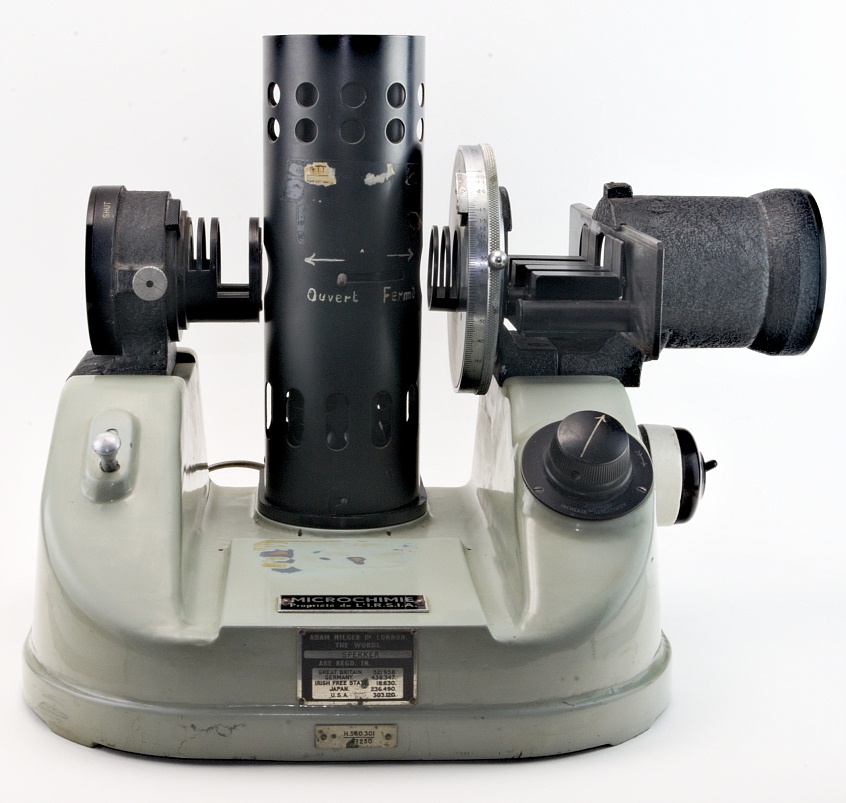
37 x 25,5 x 28,8 cm • 14"5/8 x 10" x 11"3/8
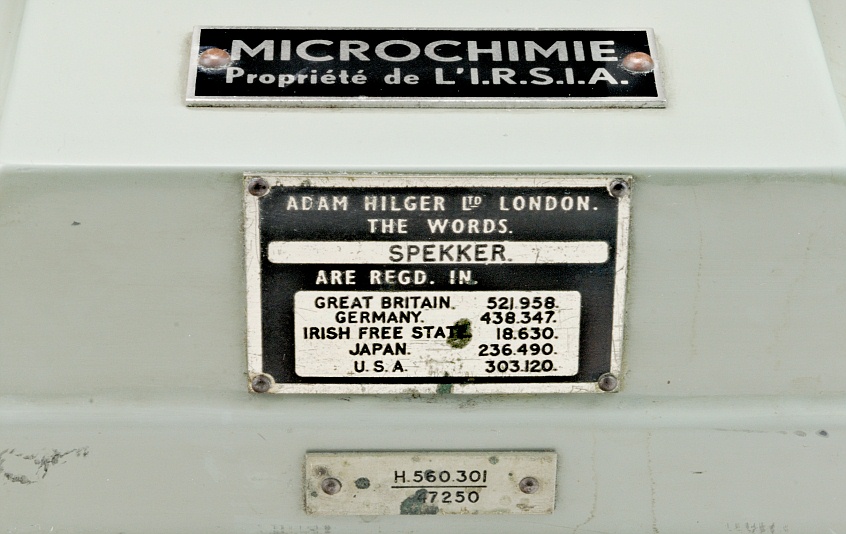
IRSIA = Institut pour l'encouragement et la recherche scientifique dans l'industrie et l'agriculture, Bruxelles, Belgium.
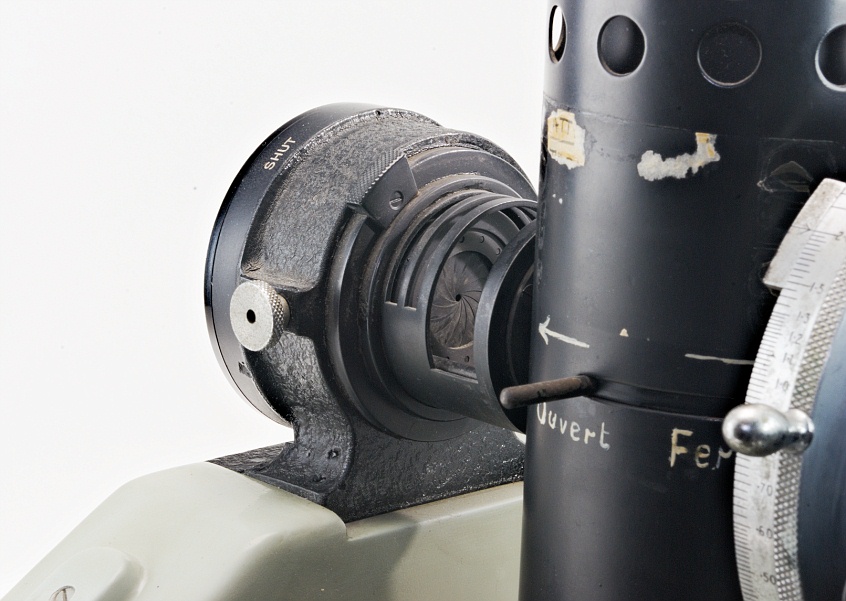


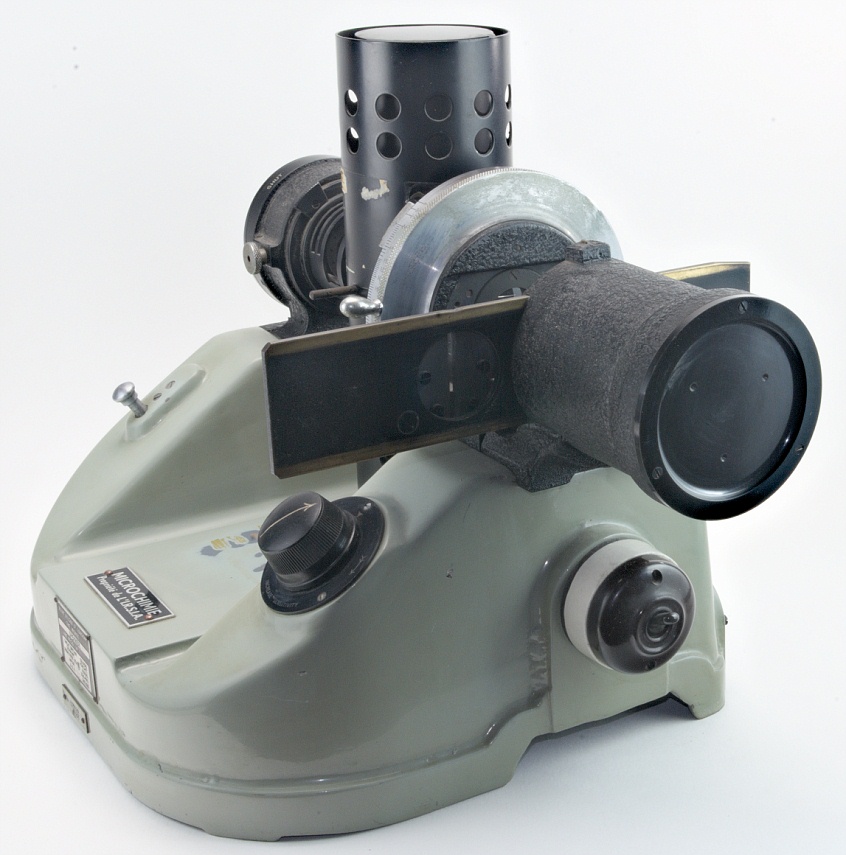
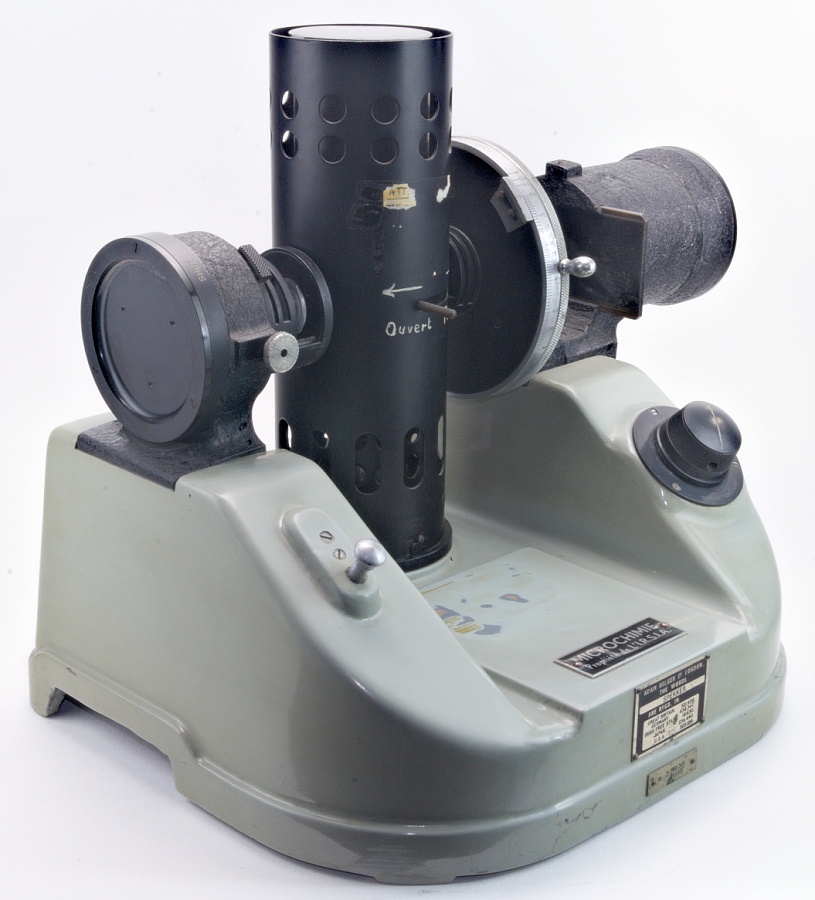

Le contenu de ce site est sous copyleft  The content of this site is under copyleft
The content of this site is under copyleft  Der Inhalt dieser Website steht unter Copyleft
Der Inhalt dieser Website steht unter Copyleft
